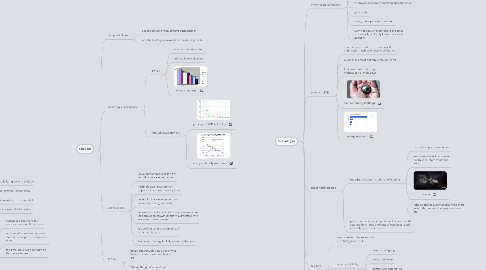
1. overall vision
1.1. progress
1.1.1. where will progress happen?
1.1.2. manufacturing used to be hard, require specialized skills and tools
1.1.3. 3D printing at all levels is changing that
1.1.4. limiting factor is design and software
1.2. current limitations
1.2.1. 3D printers are limited in materials
1.2.2. resolution of 3D printers is still limited
1.2.3. design is extremely laborious and challenging
1.2.4. molecular tools are horrendously expensive and require precision manufacturing
1.2.5. control of these machines/devices requires lots of low-level programming
1.3. approaches
1.3.1. largely automate design and construction of 3D machines
1.3.2. replace manual control systems with machine learning systems
1.3.3. replace precision manufacturing and dead reckoning with intelligent feedback control using computer vision
1.3.4. figure out how to "telescope scale and precision": use medium sized 3D printers to create both high precision smaller devices, as well as much larger devices
1.3.5. keep it cheap and self-replicating; it's not the ability to do this, it's the ability to do it cheaply that counts
1.4. potential projects
1.4.1. next semester: build 3D printer
1.4.2. next fall: build interesting objects with 3D printer
1.4.3. build a cheap 3D metal printer
1.4.4. use 3D computer vision / stereo to help with making matching parts
1.4.5. use machine learning and evolutionary algorithms to help in the design of new machines
1.4.6. use neural networks for visual feedback control
1.4.7. intelligent assembly, picking, etc. without programming
1.4.8. (also collaboration with robotics group)
1.5. cheap 3D printed nanodevices: what can we do?
1.5.1. DNA synthesizer
1.5.2. DNA sequencer
1.5.3. micro-chemlab
1.5.3.1. synthesis
1.5.3.2. analysis
1.5.4. micro robotic arm for picking
1.5.5. AFM / STM
1.5.6. ...
2. manufacturing
2.1. additive manufacturing, 3D printing
2.2. printing with moving parts
2.3. printing with moving parts
2.4. printing with metal
2.5. RepRap self-replicating printer
2.6. contour crafting
2.7. printable electronics
2.8. shift away from manual labor
2.9. more design work, white collar work?
2.10. not necessarily... automation of design, construction, skills
2.11. next semester: building a 3D printer from scratch (self-replication)
3. nanotech
3.1. traditional
3.1.1. bulk synthesis of molecules
3.1.2. manipulation of DNA and organisms through genetics
3.2. nanotechnology
3.2.1. create technologies at the molecular level
3.2.2. "molecular machines"
3.3. nanotech manufacturing
3.3.1. NB: this vision is probably unrealistic, but parallel molecular manufacturing is possible
3.4. IBM millipede
3.5. STM, AFM
3.5.1. NB: the little bump is about 200 atoms tall
3.5.2. you can't see the real tip of the AFM
3.6. ATPase rotor
3.7. myosin motor
3.8. single molecule sequencing
3.8.1. many more nanotech-based DNA sequencing methods: nanopores, ion torrent, etc.
3.9. combination instruments
3.9.1. electron beam lithography, ion lithography, SEM
3.10. nano-level technologies
3.10.1. DNA and carbon nanotubes are key molecules
3.10.2. directed self-assembly of complex structures using DNA
3.10.3. direct imaging and manipulation of individual molecules with AFM
3.10.4. reuse of biological components for technological means
3.11. intermediate-level technologies
3.11.1. microfluidics
3.11.2. micro-3D printing
3.11.3. microrobotics
3.11.4. MEMS
3.12. key technologies
3.12.1. understanding existing biological molecular machines
3.12.2. understanding and designing self-assembling structures
3.12.3. mapping computation onto molecular machines
4. technologies
4.1. information technology
4.1.1. machine learning
4.1.2. automated design
4.1.3. text mining, data mining, knowledge management
4.1.4. improved economic modeling and prediction
4.1.5. general AI
4.1.6. faster, more parallel computers
4.1.7. (won't talk much more about this since you already probably know quite a bit about it)
4.2. energy - LFTR
4.2.1. Thorium reactors (LFTR) - molten salt, intrinsically much safer, non-proliferative
4.2.2. burns fuel almost entirely (Uranium: 0.7%)
4.2.3. fuel mixed with salt, stays molten, can't "melt down"
4.2.4. life time supply ($40/kg)
4.2.5. energy reserves
4.3. space technologies
4.3.1. robotics and automated manufacturing
4.3.1.1. crucial for space exploration
4.3.1.2. lots of resources in space in nearly ideal state (meteoric iron)
4.3.1.3. vision
4.3.1.4. robotic probes automatically mine metal asteroids, convert into space stations etc.
4.3.2. planets are uninteresting; the real action is in the asteroid belt: large amounts of resources, easily accessible, no launch costs
4.4. big tech
4.4.1. doesn't seem to be related to CS at first glance, but...
4.4.2. made possible by
4.4.2.1. rapid prototyping
4.4.2.2. design software
4.4.2.3. control and automation
4.4.2.4. 3D additive manufacturing
4.4.3. scale of these projects would be too large without information technologies
4.5. big tech supplies energy and raw materials; what are we going to do with them?
5. solutions
5.1. two possibilities
5.1.1. accept growth limits, achieve sustainability
5.1.2. new technological revolution to extend growth
5.2. achieving sustainability
5.2.1. by fiat
5.2.1.1. limit carbon emissions
5.2.1.2. enforce family planning
5.2.1.3. energy intensity
5.2.2. through development
5.2.2.1. per capita GDP vs fertility
5.2.2.2. energy intensity over time
5.3. observations
5.3.1. development reduces fertility to below replacement rates
5.3.2. technological development supports economic development
5.3.3. technological development also decreases energy intensity
5.3.4. attempts to enforce limits on carbon emissions or population growth by fiat may interfere with economic development
5.3.5. it's unclear what the outcome of either strategy is
5.3.6. better technology is likely to help either way
5.4. TODO
5.4.1. figure out through simulations what the outcomes of various choices are
5.4.2. WS: multi-agent simulations
6. problems
6.1. exponential growth is unsustainable
6.2. 1% growth = doubling in 70 years
6.3. population growth
6.4. energy consumption
6.5. carbon use (NRO)
6.6. S-curve
6.6.1. population growth in biology
6.6.2. initial growth - exponential
6.6.3. final slowdown - exponential
6.6.4. same reasons (biologically)
6.7. multiple S-curves can stack
6.7.1. human societies have hit resource limits multiple times
6.7.2. technological revolutions have started a new growth phase each time
6.7.3. the time scale has been getting shorter each time
